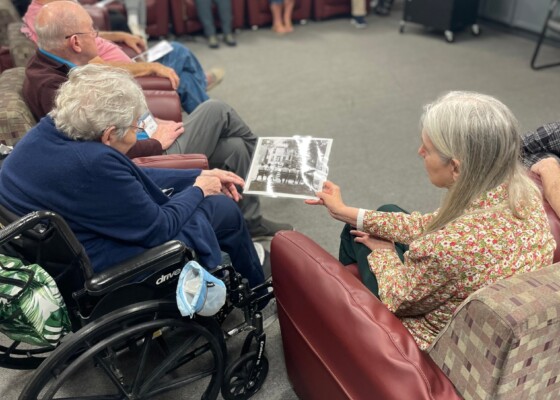Meet Your Guides: Part 5
July 12, 2016We’re introducing you to the creative, intelligent and environmentally savvy scholars leading us on our adventures (register for one here). Our scholars will help infuse the humanities into each excursion by facilitating interesting…
We’re introducing you to the creative, intelligent and environmentally savvy scholars leading us on our adventures (register for one here). Our scholars will help infuse the humanities into each excursion by facilitating interesting conversations that connect environmental literature, nature and the past, present and future of Hoosier stewardship. Be sure to check the blog throughout the summer to “meet the minds!”
Meet…
Micah Towery, assistant professor of English at Goshen College
What excursions will you lead?
What drew you to Next Indiana Campfires? How does it connect to your professional or personal interests?
As a Goshen faculty member, I have been to Merry Lea on multiple occasions (even staying the night!). I was always struck by how much environmental diversity was compacted into such small space. You learn so much by contrast on a short walk. Merry Lea also represents an important history of how humans relate to and consciously shape the environments around them. This history makes me think about the way poetry frames the relationship between humans and their world. In both cases, humans shape and are shaped. As a poet, I often see writing as a way to frame our interactions with the world around us.
What author, book, essay or poem first awakened an interest in environmental writing? Tell us a little about when you read it and how it impacted you.
Many concerns that preoccupy ‘environmental’ writers–A.R. Ammons, for example–mirror broader concerns of writers: what am I and how do I relate to the people and spaces around me? What is this experience of beauty? What truths or guidance or peace can I find in that experience?
Like many people, my first exposure to environmental writing as an explicit category was Wendell Berry. In particular, I remember Wendell Berry’s piece “Out of Your Car, Off Your Horse.” I was struck by this passage: “If you want to see where you are, you will have to get out of your space vehicle, out of your car, off your horse, and walk over the ground. On foot you will find that the earth is still satisfyingly large, and full of beguiling nooks and crannies.” To me, that resonated as a strong call for writers to elicit the experience of love in readers–not as an abstract idea, but as a specific passion: a passion for a place or a person. It is this kind of love that makes us get out of our car and see particulars that beguile abstract thought. When we’re beguiled, when we’re confused, then we can become open to experiencing the world as it is, not as we try to force it to be.
Where’s your favorite place to spend time outdoors in Indiana? Have you discovered a hidden gem that more Hoosiers should know about?
It shouldn’t be a surprise that I’ll say Merry Lea because that is the location of my ‘expedition’ for the NI Campfires project. As I said above, you discover a lot in a short time. They even have a cabin there you can rent for the evening.
What’s the focus of your scholarly research / creative practice? How does it relate to nature and the environment?
I’m very concerned with the nature of the self and the experience of time. The natural world brings a whole different perspective on time. For a current writing project, I have spent a good bit of time exploring the geographical development of the continental US.
Is there an environmental humanities topic or text that you love teaching? What is it, and why do you love using it in the classroom?
I have always enjoyed teaching Willa Cather. I have been teaching My Antonia in a course at Goshen called “Writing About Home.” The text contains some powerful landscape descriptions, and ‘the land’ is always present in her novels as a kind of character. Many students only experience ‘the land’ in a mediated way, and it’s easy for them to lose touch. I have also taught a course on ‘rural fiction’ that touches on similar themes with texts like The Good Earth and Peace Shall Destroy Many. When they read about characters whose home and entire sense of self is built on land in a direct way, students are challenged to think about the role of the environment in their own life, how they relate to it (or don’t).
Okay, just for fun! If you could have a bobble-head of any Hoosier living or dead, who would it be and why?
If we’re talking bobbleheads, I feel obligated to pick a famous Hoosier baseball player like Cy Williams. He lived in South Bend for a while, and after a baseball career as player and later coach, he worked as an architect in retirement. Have to admire that kind of human breadth.
—————————————————-
Next Indiana Campfires is a unique way to connect nature, literature and Indiana’s Bicentennial. The program is supported by the Efroymson Family Fund, the Nina Mason Pulliam Charitable Trust and Pulitzer Prizes Centennial Campfires. Indiana Humanities is supported in part by Lilly Endowment Inc. and the National Endowment of the Humanities.
This post is part of the weekly blog series devoted to the initiative. Check back every Tuesday to learn more about Indiana’s great environmental literature, find out interesting facts about Hoosier stewardship, get all the latest program details and more.


